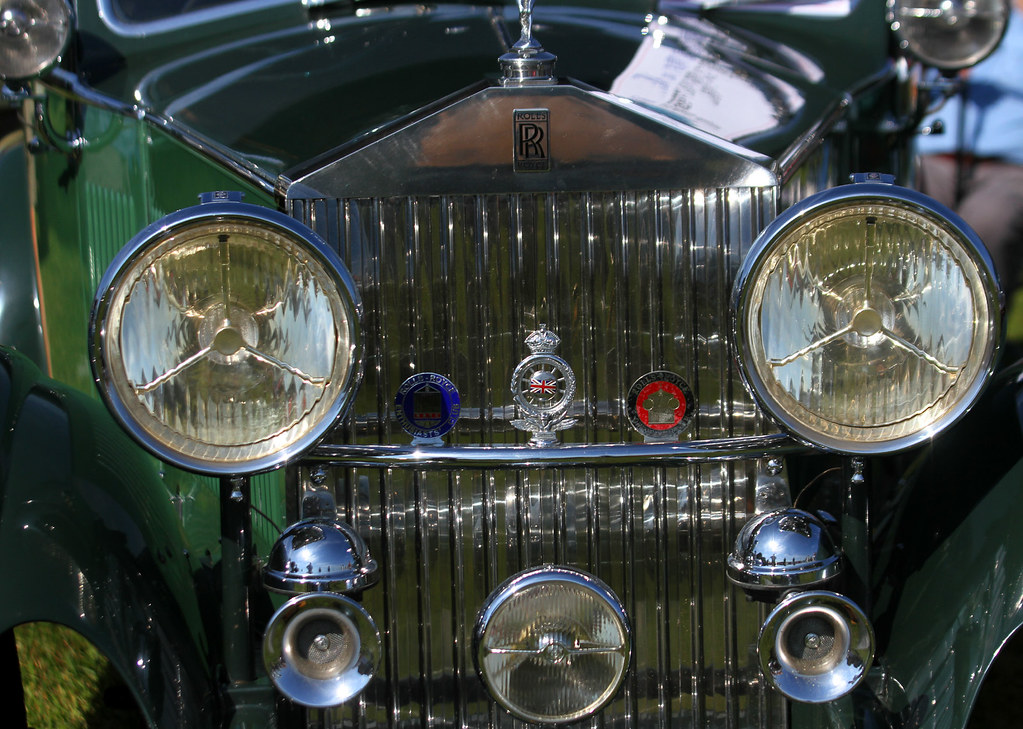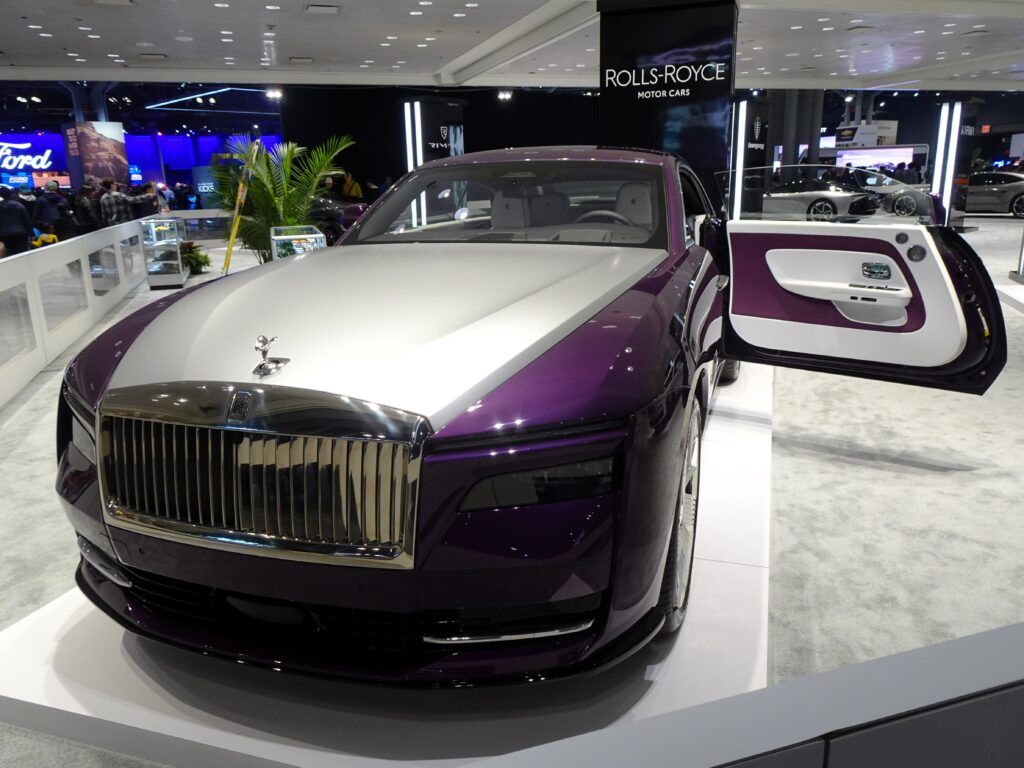The 1930s represent a singularly pivotal era in automotive manufacturing, a period marked by a fascinating duality: global economic recovery alongside an emerging class of wealthy individuals. These discerning patrons sought to express their status through the most fashionable and technologically advanced statement of the time—the motor car. This was more than mere transportation; it was a canvas for art, engineering, and a bold vision for the future, realized in metal and magnificent design.
Gone were the functional, often austere, design trends of the 1920s. The new decade heralded a wave of grander, more avant-garde aesthetics, drawing inspiration from diverse fields, including Art Deco architecture and modern art. This golden age of styling innovation spanned continents, encompassing the finest luxury machines from England and America, the exotic and unusual creations of French automakers, and the boundary-pushing performance vehicles that emerged from Germany. It was a brilliant, albeit brief, flourishing of creativity.
Tragically, this era was abruptly curtailed by the outbreak of World War II, forcing many manufacturers to cease passenger car production or severely restrict their output. The industry’s post-war recovery was arduous, yet the cars of the 1930s have retained an enduring allure for the world’s wealthiest collectors. These pre-war marvels are rolling sculptures, testaments to a time when craftsmanship, innovation, and an unwavering commitment to beauty converged. Join us as we explore 15 of the most exquisite designs from this unforgettable chapter in automotive history, celebrating vehicles that continue to define elegance and engineering brilliance.
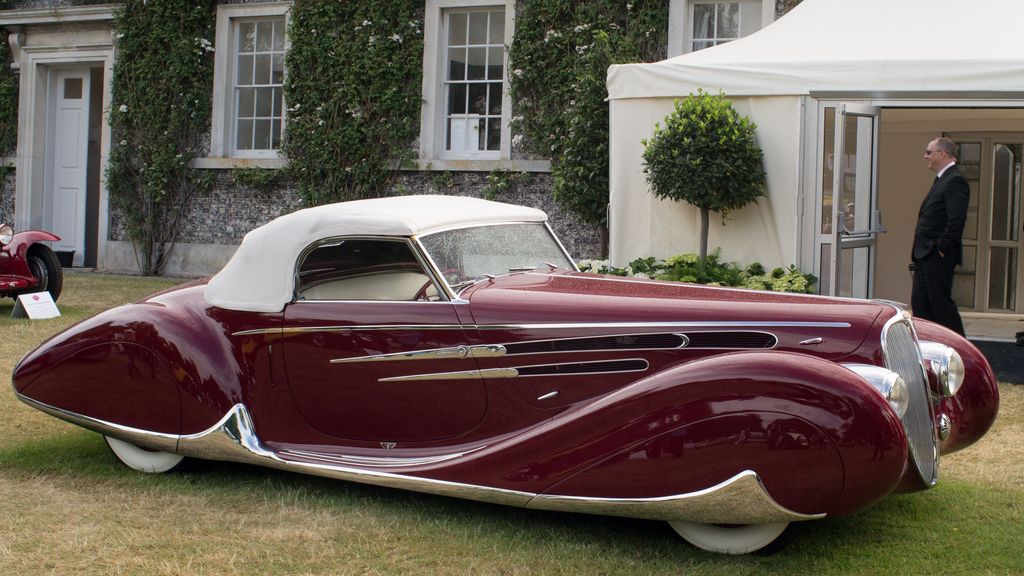
1. **Delahaye Type 165**Named for founder Emile Delahaye, the French carmaker saw its profile grow exponentially in the mid-1930s, particularly after the release of the Type 135. This model distinguished itself as both a premier racing machine and a highly desirable luxury car. Following numerous competition triumphs, Delahaye developed a successor, the Type 145, with its luxury variant christened the Type 165. The most famous Type 165 examples were bodied by Figoni & Falaschi.
Only a handful of these magnificent cars were made, with the most sought-after featuring a V12 engine derived from the racing Type 145. A Type 165 was showcased at the 1939 New York World’s Fair, billed as part of “The World of Tomorrow.” However, the looming war in Europe brought a future far different from Delahaye’s vision. The company survived the war but struggled to find buyers afterward, eventually being bought out in 1954 and ceasing passenger car production a year later. This left the Type 165 as one of the last products of its heyday—a representation of a future that never was.
Car Model Information: 2021 Lincoln Navigator Reserve
Caption: Henri Chapron
Name: Delahaye 175/178/180
Manufacturer: Delahaye
Production: 1948–1951
Class: Luxury car
Layout: FR layout
BodyStyle: coachbuilt styles
Engine: Overhead valve engine,Straight-six engine
Transmission: Preselector gearbox
Length: 4.62-metres
Width: 1.69-metres
Height: various
Weight: cvt
Wheelbase: 2.95-metres
Predecessor: Delahaye 145#Type 165
Successor: Delahaye 235
Related: Delahaye 135
Designer: Various coachbuilders
Categories: 1950s cars, All articles needing additional references, All articles that may contain original research, All articles with incomplete citations, All articles with unsourced statements
Summary: The Delahaye Type 175 is a coachbuilt luxury automobile manufactured by French automaker Delahaye. Production build numbers were formally recorded from early 1948 to mid 1951, validating that 107 cars were built in the mechanically cloned three wheelbase series comprising the Types 175/175S, 178 and 180.
This run of 4.5-litre chassis was offered in a variety of body-styles, exclusively built by coachbuilders. Delahaye did not have its own coachbuilding capability.
A 1953 fire in the administration and drawing offices destroyed most of its files and technical drawings. Consequently, little is known about the Type 175 and the longer-wheelbase Types 178 and 180.
Club Delahaye has recorded 25 surviving cars, out of the 107 confirmed built. There were 51 Type 175 cars, most being the optional 175S variant. There were 38 Type 178 cars, a few of which were built with 175S options that were not offered on that model. There were 18 Type 180 cars, two of which have the optional 175S engine, both being heavily-armoured Chapron-bodied limousines built for the President and Vice President of France’s Communist party.
Get more information about: Delahaye 175
Buying a high-performing used car >>>
Brand: Delahaye Model: Type 165
Price: $39,193 Mileage: 92,317 mi.
Read more about: 12 Automotive Disasters: The Most Infamous Cars
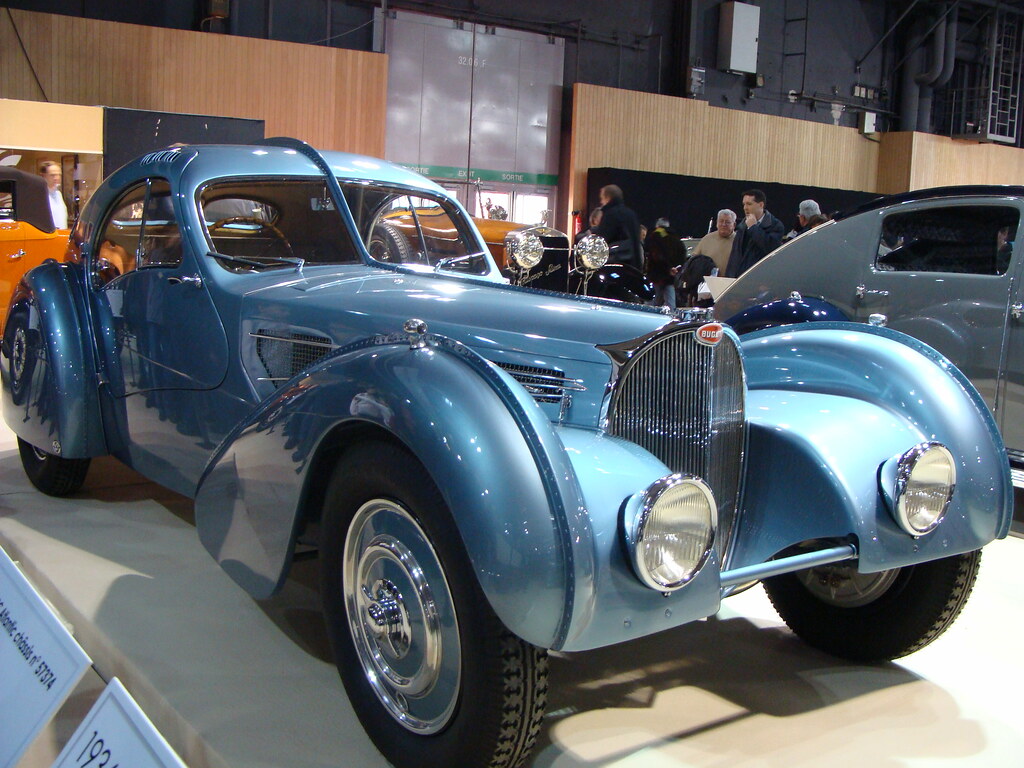
2. **Bugatti Type 57 SC Atlantic**One of the world’s most valuable cars, the Bugatti Type 57 SC Atlantic is also central to one of automotive history’s greatest mysteries. Four examples were built, but only three survive today, each known by its original owner’s surname: the Rothschild Atlantic, the Holzschuh Atlantic, and the Pope Atlantic (now owned by Ralph Lauren).
The second Atlantic produced was retained by Jean Bugatti, Ettore’s son, for personal use. During the war, Bugatti moved factory equipment by train to a safer location, but this Atlantic never arrived. Its disappearance is unsolved, with theories ranging from destruction in a bombed factory to being hidden in a secret location by Ettore Bugatti. Its flowing, teardrop-shaped body, crafted from lightweight magnesium alloy, gives it a sense of motion. The car’s riveted dorsal seam, long sweeping fenders, and graceful curves define its unique and elegant silhouette, solidifying its status as an Art Deco masterpiece.
Car Model Information: 2021 Lincoln Navigator Reserve
Name: Bugatti Type 57
Caption: 1936 Bugatti Type 57 Atalante
Manufacturer: Bugatti
Assembly: Molsheim
Production: 1934–1940,710 produced
Designer: Jean Bugatti
Class: Grand tourer
Engine: DOHC,Straight-8
Predecessor: Bugatti Type 49
Successor: Bugatti Type 101
Categories: 24 Hours of Le Mans race cars, Articles with short description, Bugatti automobiles, CS1 Romanian-language sources (ro), Cars introduced in 1934
Summary: The Bugatti Type 57 and later variants (including the famous Atlantic and Atalante) was a grand tourer built from 1934 through 1940. It was an entirely new design created by Jean Bugatti, son of founder Ettore. A total of 710 Type 57s were produced.
Type 57s used a straight-8 twin-cam engine of 3.3 L (3257 cc/198 in³) displacement. Bore and stroke were 72 mm by 100 mm based on that of the Type 49 but heavily modified by Jean Bugatti, unlike the single cam engines of the Type 49 and earlier models. The engines of the Type 50, 51 used bevel gears at the front of the engine to transmit power from the crankshaft, whereas the Type 57 used a train of spur gears at the rear of the engine, with fiber gear wheels on the camshafts to achieve more silence in operation.
There were two basic variants of the Type 57 car:
The original Type 57
The lowered Type 57S/SC
The Type 57 chassis and engine was revived in 1951 as the Bugatti Type 101. A rediscovered Type 57 was sold for 3.4 million euros at auction on 7 February 2009 at a motor show in Paris.
Get more information about: Bugatti Type 57
Buying a high-performing used car >>>
Brand: Bugatti Model: Type 57 SC Atlantic
Price: $39,193 Mileage: 92,317 mi.
Read more about: The Billionaire’s Driveway: An Exclusive Look at The World’s Most Coveted Celebrity Car Collections
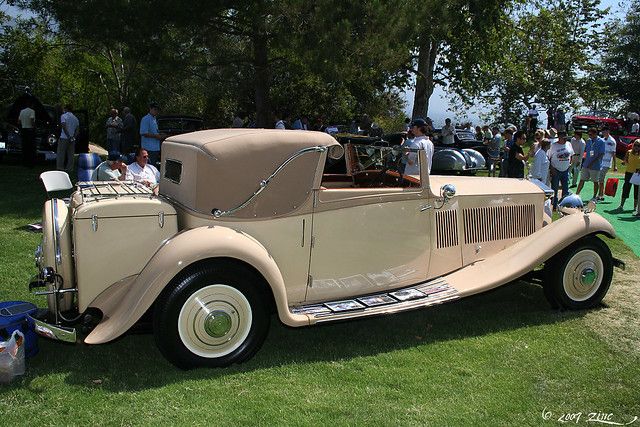
3. **Rolls-Royce Phantom II**Unveiled in 1929 as the replacement for the original Phantom, the Phantom II featured iterative mechanical improvements and styling tweaks by its coachbuilders. Competing against marques like Daimler and Lanchester in the 1920s, Henry Royce designed the car to reassert the company’s luxury leadership. It came standard with a revised 7.7L six-cylinder engine producing 122 horsepower.
A redesigned chassis allowed the car to sit lower, setting it apart visually. Just under 1,700 examples were made, with approved coachbuilders providing unique bodywork per owner specifications. A higher-performance Continental variant saw 281 examples produced. Many consider the Phantom II the best-looking pre-war Rolls-Royce, appreciating its timeless silhouette over the Phantom III’s upgraded engine and complexity.
Car Model Information: 2021 Lincoln Navigator Reserve
Name: Rolls-Royce Phantom II
Manufacturer: Rolls-Royce Limited
Production: 1929–1935,1,681 produced
1,400 “regular” cars
281 Continentals
9 experimental cars
Predecessor: Rolls-Royce Phantom I
Successor: Rolls-Royce Phantom III
Class: Luxury car
Engine: straight-6
Transmission: manual transmission
Wheelbase: 144 in (3658 mm),150 in (3810 mm)
Assembly: Derby
Categories: 1930s cars, Articles with short description, Cars introduced in 1929, Commons category link from Wikidata, Rolls-Royce Phantom
Summary: The Rolls-Royce Phantom II was the third and last of Rolls-Royce’s 40/50 hp models, replacing the New Phantom in 1929. It used an improved version of the New Phantom engine in an all-new chassis. A “Continental” version, with a short wheelbase and stiffer springs, was offered.
Get more information about: Rolls-Royce Phantom II
Buying a high-performing used car >>>
Brand: Rolls-Royce Model: Phantom II
Price: $39,193 Mileage: 92,317 mi.
Read more about: Remember Your First Car? The 12 Iconic Models That Defined a Generation
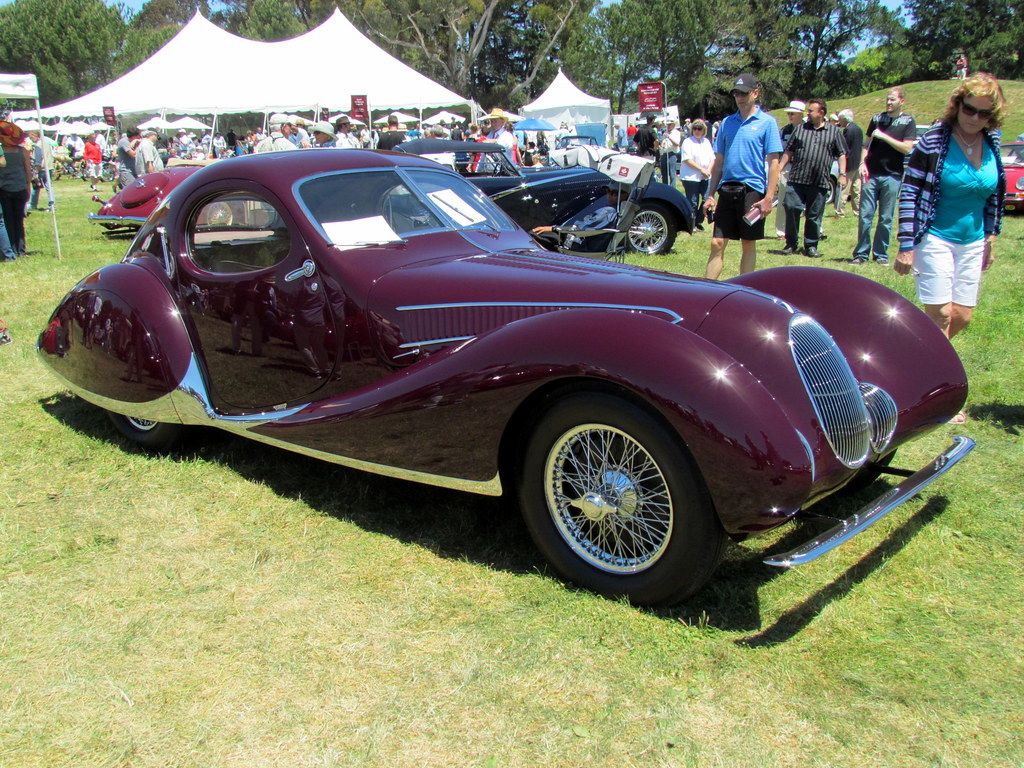
4. **Talbot-Lago T150-C SS Teardrop Coupe**After Anthony Lago rescued Talbot from bankruptcy in the mid-1930s, the T150-C marked its comeback. Initially a racing version of the T150 engine, Lago sought a head-turning bodyshell to truly showcase it. He partnered with Figoni & Falaschi of Paris, also designers of the Delahaye Type 165.
The resulting Talbot-Lago drew heavily from Art Deco, with swooping lines forming its iconic “Teardrop Coupe” shape. Sixteen examples were constructed, each unique to its owner’s wishes. Though primarily a luxurious road car, one owner raced it in the 1939 24 Hours of Le Mans. The war, breaking out weeks after the race, curtailed further competition use and threatened Talbot-Lago’s survival. While the company resumed operations, it never again produced anything as valuable or jaw-dropping as the Teardrop Coupe.
Car Model Information: 2021 Lincoln Navigator Reserve
Name: Talbot-Lago
Logo: Talbot brand logo 1954.png
LogoSize: 150
Type: Société Anonyme
Industry: automotive industry
Fate: Simca
Predecessor: Automobiles Talbot France
Founded: 1936
Founder: Antonio Lago
Defunct: [object Object]
HqLocationCity: Suresnes
HqLocationCountry: France
Products: car,auto racing
Brands: Talbot
Categories: Articles with short description, CS1 French-language sources (fr), Commons category link from Wikidata, Defunct motor vehicle manufacturers of France, Formula One constructors
Summary: Talbot-Lago was a French automobile manufacturer based in Suresnes, Hauts de Seine, outside Paris. The company was owned and managed by Antonio Lago, an Italian engineer that acquired rights to the Talbot brand name after the demise of Darracq London’s subsidiary Automobiles Talbot France in 1936.
Under Lago’s managing, the company produced a range of automobiles that included sport and racing cars; in some cases, the vehicles were designed by coachbuild company Figoni et Falaschi. Talbot-Lago faced financial problems; as a result, Lago sold the company to Simca in 1959.
Get more information about: Talbot-Lago
Buying a high-performing used car >>>
Brand: Talbot-Lago Model: T150-C SS Teardrop Coupe
Price: $39,193 Mileage: 92,317 mi.
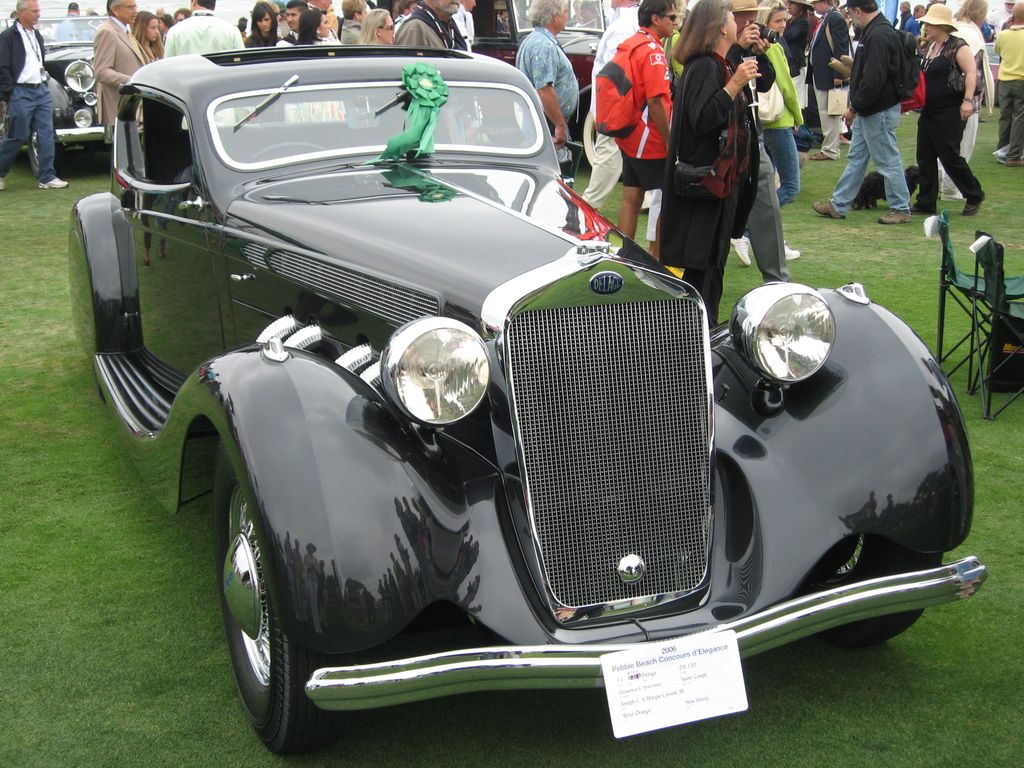
5. **Delage D8-120**The long-running Delage D8 was upgraded in 1937 with a new chassis, similar to Delahaye’s—unsurprising, as the two had merged a year prior. A new gearbox and revised brakes were also fitted, leading to the D8-120. Customary for the era, various coachbuilders provided bodies, making each example unique.
Many sought-after versions combined leading aerodynamics with Art Deco flair, achieving speeds just under 100 mph without sacrificing looks. Their rarity and status as top French luxury cars keep them highly desirable for collectors, though prices haven’t surged like other French rarities. A 1937 example sold for $770,000 in 2013. Establishing a fixed value is difficult due to condition, history, and private sales, but interest in the D8-120 is expected to remain strong, ensuring a safe return on investment.
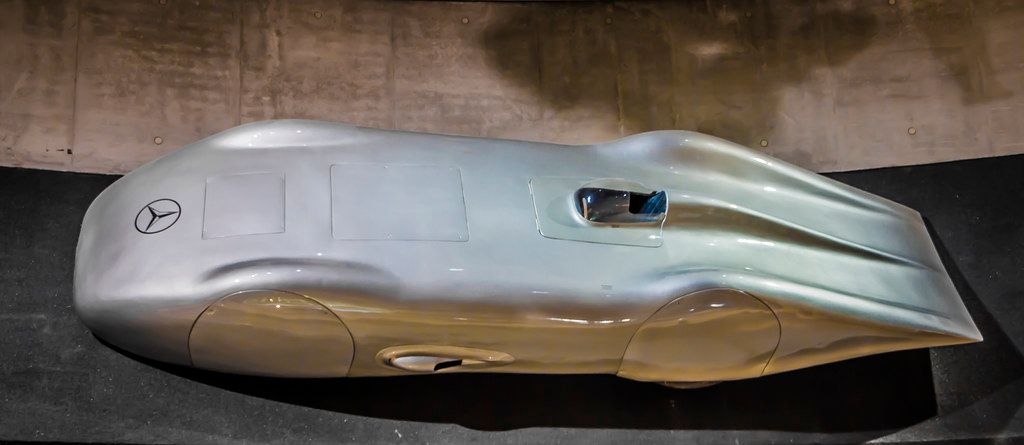
6. **Mercedes-Benz W125**One of history’s most formidable Grand Prix cars, the W125 delivered around 600 horsepower and speeds over 200 mph. Unlike others on this list, it was purely a racing machine with no customer version, though one example is now privately owned. Unveiled in 1937, it raced for only a year before new regulations mandated a successor, the W154.
Many consider it the ultimate pre-war race car, its streamlined appearance instantly recognizable. While lacking the Art Deco flamboyance of a Delahaye or the pomp of a Rolls-Royce, its design was arguably just as influential. Its looks epitomized the brutal power within. Such is its status that many consider it priceless. The sole known private example sold for an undisclosed sum to an unknown collector, cementing its legendary and elusive status.
Read more about: Navigating the Autobahn’s Complexities: The 200 MPH Incident and Germany’s Ongoing Debate Over Speed Limits

7. **Duesenberg SJ**The Duesenberg SJ, the supercharged version of the Model J, has a somewhat confusing history. Duesenberg built 38 superchargers, but some were swapped, and several factory SJs had superchargers removed after sale. Thus, finding a non-supercharged SJ isn’t uncommon, despite the model’s purpose. However, its grand looks are far less debatable.
The SJ embodied the best of American car design, with discerning buyers choosing from noteworthy coachbuilders. Each varied slightly, making it hard to single out a “best-looking” chassis, but all conveyed unmatched importance and refinement. Many surviving SJs boast compelling backstories; one sold in 2015 was briefly a Chicago taxi after being built for the Mars candy heiress. Its massive, opulent presence, often customized by prestigious coachbuilders, features a long hood, sweeping fenders, and intricate chrome detailing, conveying an undeniable air of exclusivity.
As we journey deeper into the golden era of pre-war automotive design, we uncover even more treasures that stand as testaments to unparalleled craftsmanship and bold innovation. The first seven vehicles we explored offered a glimpse into the diverse philosophies that shaped this period. Now, we continue our expedition, focusing on eight more iconic machines that not only pushed the boundaries of aesthetic beauty and engineering prowess but also left an indelible mark on automotive culture, captivating collectors to this very day. Prepare to be enthralled by the distinctive appeal and enduring legacy of these extraordinary automobiles.
Read more about: Jay Leno’s Unrivaled Garage: An In-Depth Look at the Automotive Marvels in the World’s Most Envied Collection

8. **Packard Twelve Dietrich Convertible Victoria**For the most discerning clientele, the “regular” Packard Twelve simply wouldn’t suffice; thus, Packard offered the extraordinary Dietrich Individual Customs. These exclusive models came with a significantly higher price tag, yet their enhanced power and styling justified every penny. Beneath the elegant hood resided a formidable V12 engine, capable of producing 160 horsepower, but it was truly the bespoke custom coachwork and opulent interior that set these cars apart, making them a true statement of automotive artistry.
Regarded as one of America’s most coveted classics, the Dietrich Convertible Victoria remains largely within the United States, rarely appearing for public sale. Enthusiasts consider themselves fortunate to catch a glimpse of one at prestigious concours events, where these masterpieces frequently earn top awards. Acquiring such a vehicle demands extremely deep pockets, as evidenced by a 2015 sale where an example commanded an impressive $4,130,000, solidifying its status among the most expensive American cars of its kind.
Car Model Information: 2021 Lincoln Navigator Reserve
Name: Packard Twelve
Caption: 1934 Packard Eleventh Series Twelve (1108) Dietrich Convertible Victoria
Manufacturer: Packard
ModelYears: 1916–1923,1933–1939
Assembly: Packard Automotive Plant,Detroit,Michigan,United States
Layout: Front-engine, rear-wheel-drive layout
Related: Packard Super Eight
Engine: {{convert,424.1,CID,L,1,abbr=on,V12 engine
Abbr: on (1933-1934)
BodyStyle: coupé,Convertible (car),Sedan (automobile)
Wheelbase: {{convert,125,-,135,in,mm,0,abbr=on
Predecessor: Packard Six
Successor: Packard Custom Super Eight
Categories: Articles with short description, Cars discontinued in 1939, Cars introduced in 1916, Cars introduced in 1933, Commons category link from Wikidata
Summary: The Packard Twelve was a range of V12-engined luxury automobiles built by the Packard Motor Car Company in Detroit, Michigan. The car was built from model year 1916 until 1923, then it returned 1933 until 1939. As a sign of changing times, the majority of second generation Packard Twelves received standard bodywork, with custom bodywork gradually losing favor. Many of the custom cars were actually only “semi-customs”, with Dietrich assembling Packard-made bodies with special touches.
Get more information about: Packard Twelve
Buying a high-performing used car >>>
Brand: Packard Model: Twelve Dietrich Convertible Victoria
Price: $39,193 Mileage: 92,317 mi.
Read more about: From Roaring Powerhouses to Everyday Icons: 14 Cars That Defined the Dynamic 1920s
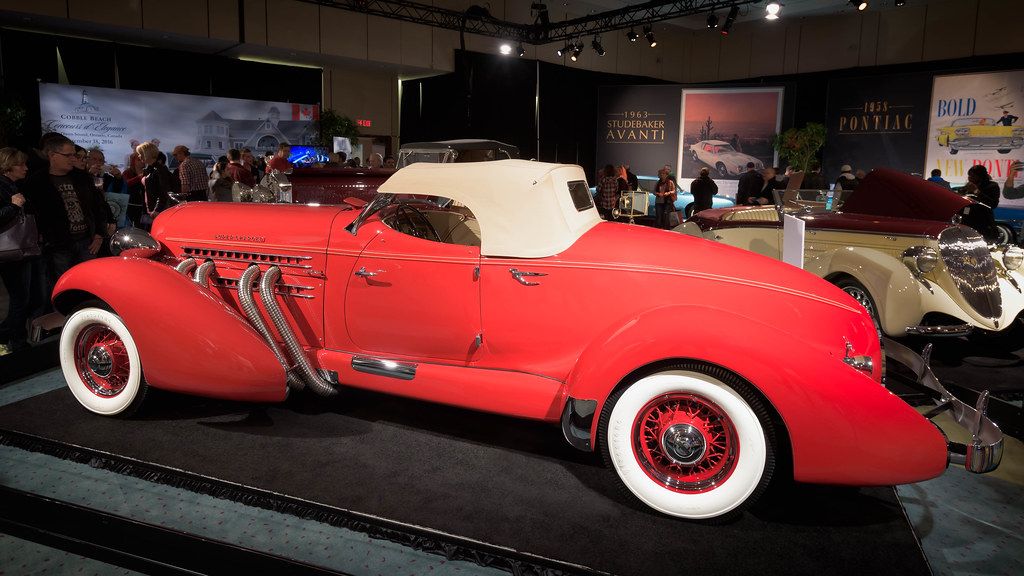
9. **Auburn 851 SC Boattail Speedster**The Auburn Boattail Speedster was not merely a pretty face of its era; it was also one of the fastest cars on the road. The supercharged version, unveiled in 1935, immediately made headlines by shattering an astonishing 70 different speed records at the Bonneville Salt Flats—and remarkably, it did so in stock form. Its distinctive boattail styling, previously reserved for the most exclusive, high-end coachbuilders, was introduced to a production car for the first time with this model, making it a true design pioneer.
Despite its groundbreaking design, the Boattail Speedster was a car of very limited production, with only an estimated 150 examples built annually. While it wasn’t known for being easy to drive, its primary appeal lay in its role as a halo product, boasting unique styling and class-leading performance. Each car was certified to achieve at least 100 mph, a remarkable feat for the time, and proudly bore a plaque proclaiming this achievement. Today, these Speedsters command significant sums, with the most pristine examples often having undergone extensive, multi-hundred-thousand-dollar restoration work to maintain their timeless elegance.
Car Model Information: 2024 Acura RDX Base
Buying a high-performing used car >>>
Brand: Auburn Model: 851 SC Boattail Speedster
Price: $42,875 Mileage: 27,708 mi.
Read more about: Sculpted for the Ages: MotorTrend’s Definitive Look at the Most Visually Arresting Cars from Every Iconic Marque
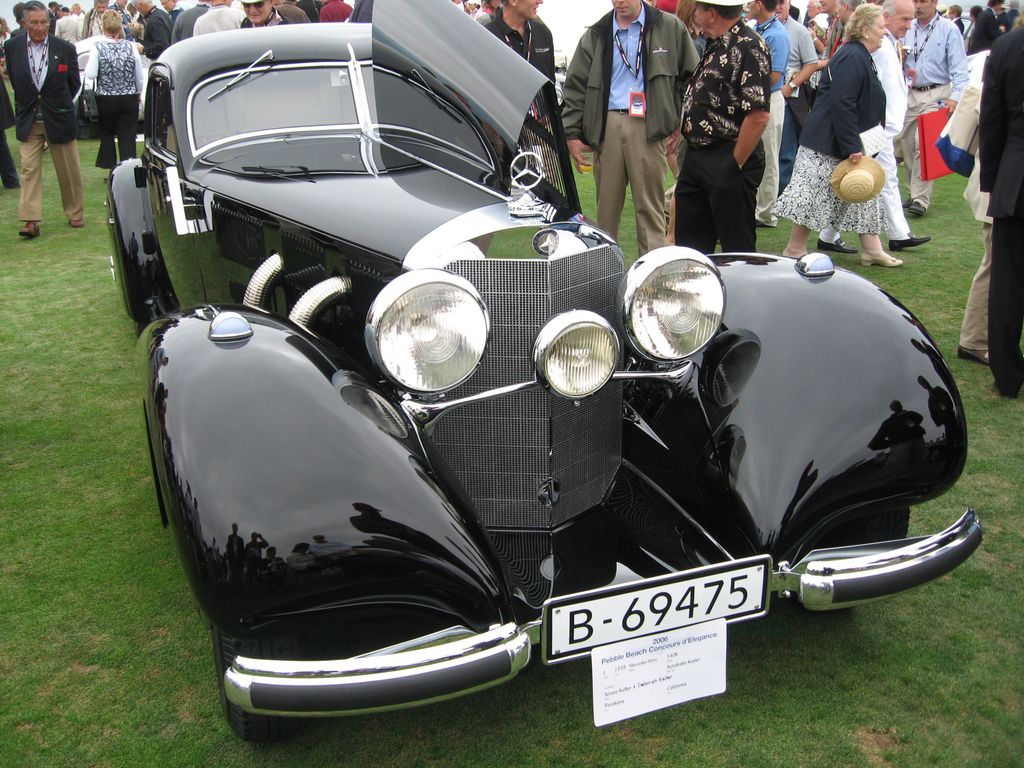
10. **Mercedes-Benz 540K Autobahn Kurier**In an era defined by grand luxury and emerging performance, few cars could rival the Mercedes-Benz 540K when it came to perfectly blending lavishness with raw power. Its exclusivity was reflected in a price tag that far surpassed what even the average luxury car buyer of the time could ever hope to afford, making it the sole preserve of the world’s wealthiest individuals. This status remains unchanged today, as these magnificent machines are among the most valuable Mercedes-Benz models ever produced, with immaculate examples fetching upwards of $10 million.
Under the hood, the 540K was propelled by a powerful 5.4-liter V8 engine, allowing it to reach an impressive top speed of 110 mph. Its sheer size and decadent furnishings meant it was exceptionally heavy, typically weighing around 5,800 pounds depending on specific coachwork and specifications. Measuring over 17 feet long and six feet wide, it was undeniably challenging to navigate on tighter roads, but practicality was never its primary purpose. The 540K was meticulously designed to make an unequivocal statement through both its commanding appearance and its formidable power, a role it continues to fulfill with undeniable aplomb even decades later.
Car Model Information: 2021 Lincoln Navigator Reserve
Name: Mercedes-Benz 540K
Caption: 1939 Mercedes-Benz 540K Special Roadster
Manufacturer: Mercedes-Benz
Production: 1936–1940 (chassis; last bodies completed in 1944)
Assembly: Sindelfingen
Predecessor: Mercedes-Benz 500K
Successor: Mercedes-Benz 580K (Prototype only)
BodyStyle: cabriolet
Layout: FR layout
Engine: Straight-8
Transmission: manual transmission
Wheelbase: 2980 mm
Abbr: on
Weight: 2700 kg
Designer: Friedrich Geiger
Categories: Articles with short description, CS1: long volume value, CS1 German-language sources (de), CS1 interwiki-linked names, Cars introduced in 1936
Summary: The Mercedes-Benz 540K (W29) is a grand touring car built by the German firm Mercedes-Benz between 1936 and 1940.
Get more information about: Mercedes-Benz 540K
Buying a high-performing used car >>>
Brand: Mercedes-Benz Model: 540K Autobahn Kurier
Price: $39,193 Mileage: 92,317 mi.
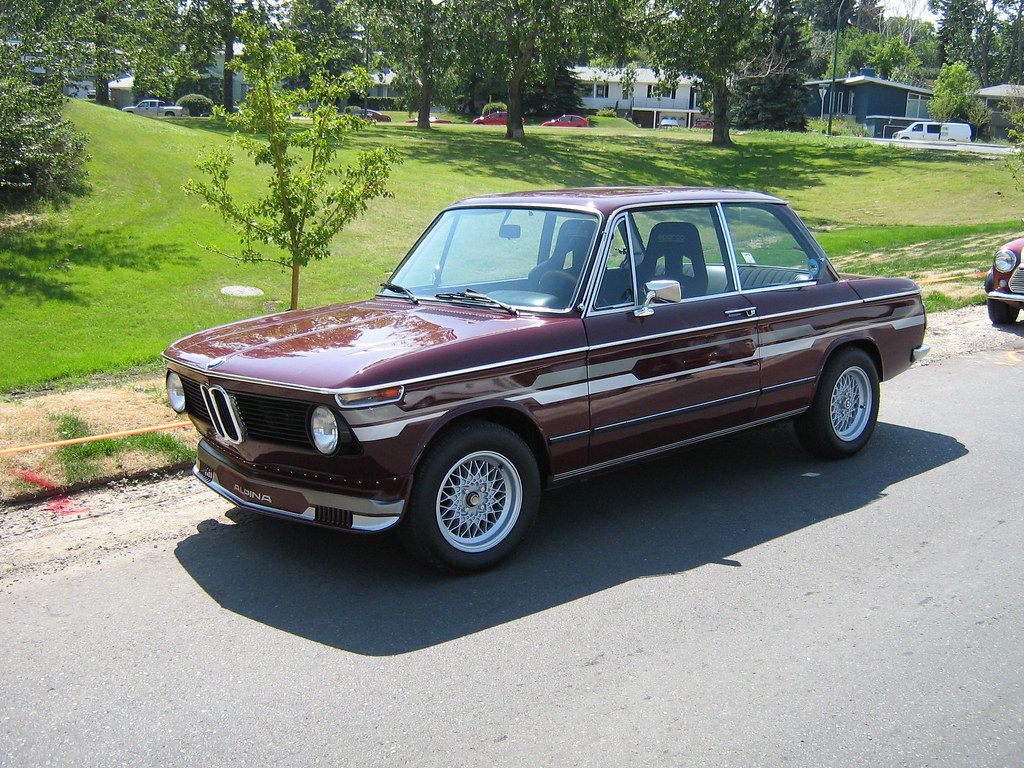
11. **BMW 328**BMW’s esteemed position in contemporary motorsport is the result of years of dedicated effort and innovation, a legacy arguably rooted in the early triumphs of the iconic 328 race car. Debuting in 1936, the 328 enjoyed an exceptionally long and successful racing career, remaining competitive well into the 1950s. Adopting a clear function-over-form approach, the 328 still managed to emerge as one of the best-looking race cars of its generation, largely due to its groundbreaking focus on lightweight design—a concept that was quite controversial at the time.
Many engineers in the 1930s clung to the belief that a heavier car would provide superior road grip, but the 328 definitively proved that reducing weight was a far more advantageous path to competitive performance. Its inherent worth was demonstrated through numerous victories at Europe’s most significant race events, including a memorable win at the Mille Miglia in 1940. This particular triumph saw the winning 328 set an average speed record for the race that, astonishingly, remains unbeaten to this day. Of the 464 examples originally built, BMW estimates that approximately 200 have survived, cementing its status as a timeless piece of racing history.
Car Model Information: 2014 BMW 328 xDrive
Name: BMW 328
Manufacturer: BMW
Production: 1936–1940,464 produced
Assembly: Eisenach
Predecessor: BMW 303#315/1 and 319/1 roadsters
Successor: BMW 507
Class: Sports car
BodyStyle: Roadster (automobile)
Layout: FR layout
Engine: BMW M328,Straight-six engine
Transmission: 4-speed manual
Wheelbase: cvt
Length: cvt
Width: cvt
Height: cvt
Weight: cvt
Related: BMW 326
Designer: [object Object],Fritz Fiedler
Categories: 1930s cars, 24 Hours of Le Mans race cars, All articles with unsourced statements, Articles with short description, Articles with unsourced statements from May 2010
Summary: The BMW 328 was a sports car produced by BMW from 1936 to 1940. Its body design is credited to Peter Szymanowski, who became BMW chief of design after World War II (although technically the car was designed by Fritz Fiedler).
Get more information about: BMW 328
Buying a high-performing used car >>>
Brand: BMW Model: 328
Price: $12,550 Mileage: 105,256 mi.
Read more about: Beyond the Hype: Dissecting EV Battery Longevity and Performance in the Real World
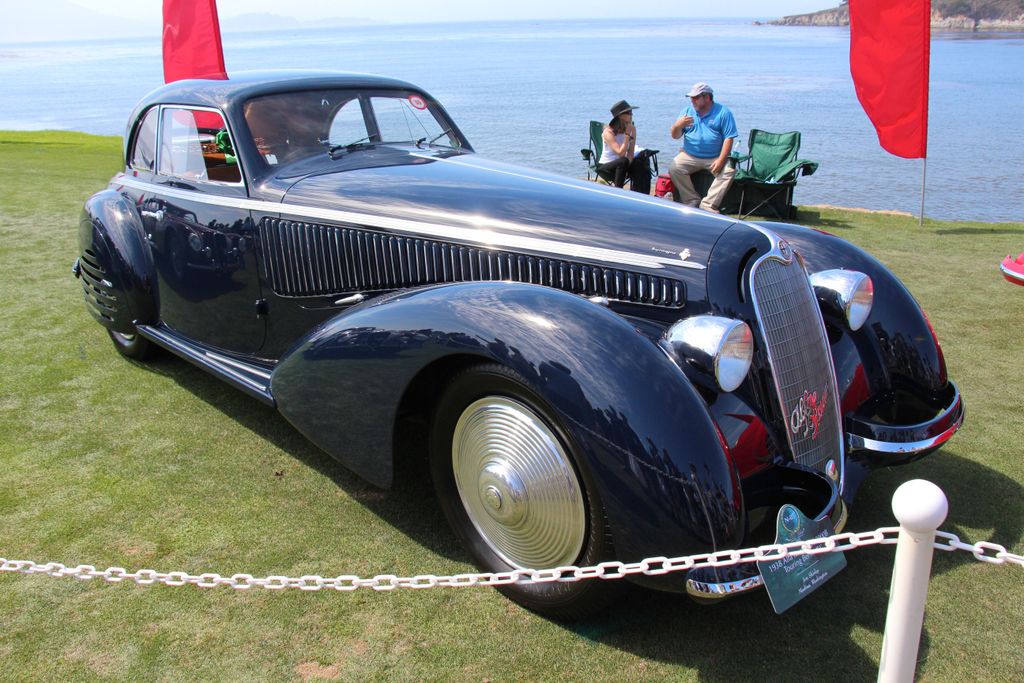
12. **Alfa Romeo 8C 2900B Touring Berlinetta**Long before the modern Alfa Romeo 8C captured the imaginations of a new generation of enthusiasts, the original 8C of the 1930s was already forging a path of groundbreaking excellence. Initially unveiled in its race-ready 2900A form in 1935, it swiftly demonstrated its formidable competition prowess by securing victories at the Mille Miglia in both 1936 and 1937, guided by the skillful hand of a young Enzo Ferrari. The “2900B” variant, introduced in 1937, emerged as a more refined, road-focused counterpart, with the Berlinetta, bodied by Carrozzeria Touring, standing out as the most visually stunning iteration.
This magnificent automobile flawlessly combined world-beating performance with Touring’s signature elegant design, solidifying its reputation as both the best-looking and one of the fastest among the many 8C coachbuilds available. Today, the Alfa Romeo 8C 2900B Touring Berlinetta is universally regarded as one of the most desirable Alfa Romeos ever created, and its exceptional status is reflected in its appropriately staggering prices. In 2019, a prime example commanded an astounding €16,745,600 at auction, making it the third most valuable pre-war car to ever cross the block at that time.
Car Model Information: 2024 Acura RDX Base
Caption: Custom Alfa Romeo 8C (1936)
Name: Alfa Romeo 8C
Manufacturer: Alfa Romeo
Production: 1931–1939
Assembly: Portello (district of Milan)
Class: Luxury car,Sports car,Racing car
Layout: FR layout
Engine: Straight-8
Designer: Vittorio Jano
Categories: 24 Hours of Le Mans race cars, Alfa Romeo sports racing cars, Alfa Romeo vehicles, Articles with short description, Cars introduced in 1931
Summary: The Alfa Romeo 8C was a range of Alfa Romeo road, race and sports cars of the 1930s.
The 8C designates 8 cylinders, and originally a straight 8-cylinder engine. The Vittorio Jano designed 8C was Alfa Romeo’s primary racing engine from its introduction in 1931 to its retirement in 1939. In addition to the two-seater sports cars it was used in the world’s first genuine single-seat Grand Prix racing car, the Monoposto ‘Tipo B’ – P3 from 1932 onwards. In its later development it powered such vehicles as the twin-engined 1935 6.3-litre Bimotore, the 1935 3.8-litre Monoposto 8C 35 Type C, and the Alfa Romeo 8C 2900B Mille Miglia Roadster. It also powered top-of-the-range coach-built production models, including a Touring Spider and Touring Berlinetta.
In 2004 Alfa Romeo revived the 8C name for a V8-engined concept car. This eventually made it into production in 2007, as the 8C Competizione.
Get more information about: Alfa Romeo 8C
Buying a high-performing used car >>>
Brand: Alfa Romeo Model: 8C 2900B
Price: $42,875 Mileage: 27,708 mi.
Read more about: The Ultimate Gallery: 12 Automotive Icons That Define Pure Beauty and Engineering Artistry
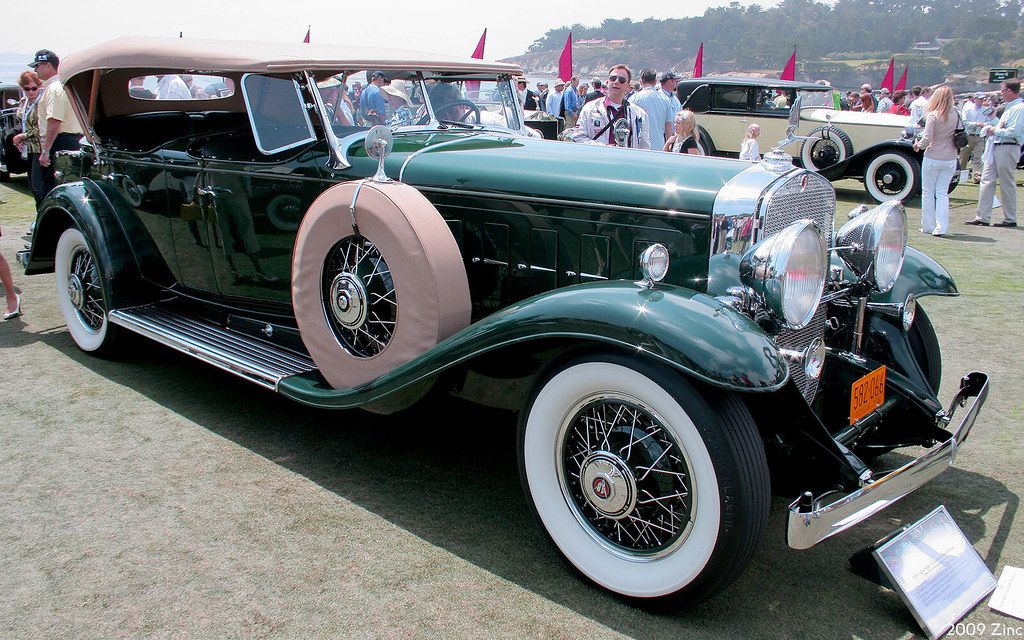
13. **Cadillac V-16**The Cadillac V-16 holds the distinction of being the first, and arguably the most successful, automobile to feature a V16 engine. Making its grand debut in 1930, this marvel remained in production for an entire decade. However, the severe economic pressures of the Great Depression meant that it never achieved the sales volumes Cadillac had initially envisioned, and at one point, it even operated as a loss maker for the company. Despite the financial challenges, Cadillac steadfastly continued its production, recognizing the V-16’s immense importance to the brand’s prestigious image.
The V-16 was offered with a vast array of body styles, with the renowned coachbuilder Fleetwood alone providing an astonishing 65 variations. Each vehicle was meticulously customized to the precise preferences of its commissioning party, making these cars particularly popular among Hollywood celebrities and other affluent individuals. Beyond its imposing bodywork, which was among the most grand of its era, Cadillac paid meticulous attention to the aesthetic appeal of the engine itself. Upon its debut, the signature V16 engine boasted an exquisite aluminum and chrome finish, accented with elegant enamel details. This pioneering focus on engine styling, alongside exterior and cabin design, cemented the Cadillac V-16’s legacy as one of the greatest American cars of its era, irrespective of its profitability.
Car Model Information: 1930 Cadillac V-16 Series 452
Caption: 1931 Cadillac V-16 Sport Phaeton convertible
Name: Cadillac V-16
Engine: Cadillac V16 engine
Manufacturer: Cadillac
Production: 1930–1940
Platform: GM D platform
Assembly: Detroit Assembly
Class: Ultra-luxury car
Layout: FR layout
BodyStyle: convertible (car)
Transmission: synchromesh,manual transmission
Designer: Harley Earl
Categories: Articles with short description, Cadillac vehicles, Cars discontinued in 1940, Cars introduced in 1930, Motor vehicles manufactured in the United States
Summary: The Cadillac V-16 (also known as the Cadillac Sixteen) was Cadillac’s top-of-the-line model from its January 1930 launch until 1940. The V16 powered car was a first in the United States, both extremely expensive and exclusive, with every chassis being custom-finished to order. Only 4,076 were constructed in its 11-year run, with the majority built in its debut year before the Great Depression took strong hold. The onset of World War II reduced the sales, resulting in its demise. It was, however, at least three times cheaper than Bugatti Royale (only 6 made).
Get more information about: Cadillac V-16
Buying a high-performing used car >>>
Brand: Cadillac Model: V-16
Price: $225,000 Mileage: 0 mi.
Read more about: Roll Back the Clock! 14 Hilarious & Forgotten Classic Car Features That Will Make You Say ‘Wait, That Was Real?!’
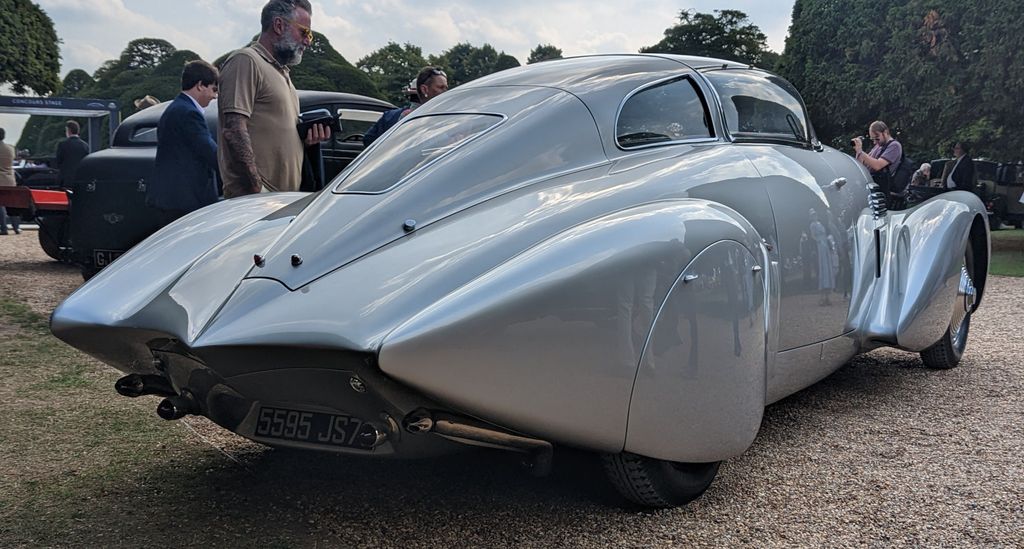
14. **Hispano-Suiza H6B Dubonnet Xenia**A true singular vision, the Dubonnet Xenia was the extraordinary brainchild of André Dubonnet, a wealthy French engineer and businessman. This one-off creation was meticulously constructed on the chassis of a Hispano-Suiza H6B, making its debut in 1938. It was lovingly named Xenia after Dubonnet’s late wife, Xenia Howard-Johnston, who had passed away two years prior to its unveiling. The car’s mesmerizing, swooping coachbuilt bodywork was engineered with an uncompromising focus on achieving maximum aerodynamic efficiency, embodying a futuristic aesthetic rarely seen at the time.
The Xenia was a showcase of technological advancements that were truly ahead of its time. Its sharply curved windshield was a cutting-edge marvel; while the first production car with a curved windshield had only appeared a few years earlier in 1934, the Xenia’s wraparound design was radically more advanced. Furthermore, its doors were exceptionally unique, featuring a two-directional opening mechanism—they first opened outwards, then elegantly slid backward, much like the sophisticated minivan doors of today. These innovative engineering solutions were essential to accommodate the Xenia’s uniquely slippery shape, which was a dramatic departure from the Hispano-Suiza upon which it was based. The car served as Dubonnet’s personal daily driver until 1940, when the outbreak of war necessitated its transfer to a hidden storage location to ensure its survival. Today, this irreplaceable masterpiece is proudly owned by the founder of the Mullin Automotive Museum in California, where it frequently captivates visitors on display.
Car Model Information: 2021 Lincoln Navigator Reserve
Name: Hispano Suiza
Logo: New Logo of Hispano Suiza.png
Fate: Safran
KeyPeople: Miguel Suqué Mateu (President), Sergio Martinez Campos (CEO), Juan Fernandez (CTO), Francesc Arenas (Head of Design), Victor Cobos (CMO)
Foundation: June 14, 1904
LocationCity: Barcelona
LocationCountry: Catalonia,Spain
Industry: Manufacturing
Founders: Marc Birkigt,Damián Mateu,Francisco Seix
Products: Automobiles, formerly also aviation components
Parent: Grup Peralada
Website: [https://www.hispanosuizacars.com/ hispanosuizacars.com]
Categories: Aircraft engine manufacturers of France, Aircraft engine manufacturers of Spain, All articles with unsourced statements, Articles with short description, Articles with unsourced statements from July 2021
Summary: Hispano-Suiza (Spanish for ‘Spanish-Swiss’) is a Spanish automotive company. It was founded in 1904 by Marc Birkigt and Damián Mateu as an automobile manufacturer and by the 1930s had several factories in Spain and one in France that produced luxury cars, aircraft engines, trucks and weapons.
In 1923, its French luxury car arm became a semi-autonomous partnership with the Spanish parent company. In 1937, the French arm was taken over by the French state for war production and after World War II continued as an independent aviation engine and components manufacturer under the Hispano-Suiza name. In 1968, the company was taken over by the aerospace company Snecma, which is now part of the French Safran Group. Meanwhile, during the Spanish Civil War, Hispano-Suiza’s Spanish factories in Barcelona and Seville were taken over by both sides for war production. In 1946, its Spanish assets were taken over by the truck manufacturer ENASA.
The relaunch of Hispano Suiza Cars in Spain has been made by the same founding family (4th generation of the Suqué Mateu Family); the company is part of the Peralada Group (owned as well by the Suqué Mateu family) in 2019 with a fully-electric 1,119 HP hypercar called Hispano-Suiza Carmen.
Get more information about: Hispano-Suiza
Buying a high-performing used car >>>
Brand: Hispano-Suiza Model: H6B Dubonnet Xenia
Price: $39,193 Mileage: 92,317 mi.

15. **Cord 810**When the Cord 810 debuted in 1936, its styling was a revolutionary departure from anything else on the road, setting it boldly apart. A significant factor in its distinctive appearance was its pioneering front-wheel-drive layout, a configuration that, while ubiquitous today, was remarkably cutting-edge in the mid-1930s. Another unique touch that captivated onlookers was its innovative folding headlights. Despite its forward-thinking design, the narrow shape of its hood earned it the memorable, if somewhat macabre, nickname of “coffin-nose.”
Like many futuristic designs, the 810 garnered both fervent fans and vocal detractors upon its release, but it quickly became a coveted possession among the rich and famous of the era. However, its innovative spirit was ultimately undermined by mechanical shortcomings; while the engine was undeniably powerful, it lacked the refinement of its rivals, and the transmission was plagued by serious reliability issues. Consequently, the 810’s production run was regrettably short, lasting only two years between 1936 and 1937. Later cars were marketed under the 812 moniker, featuring a supercharged option introduced in a desperate bid to boost flagging sales. This effort proved insufficient, and in the end, only approximately 3,000 examples were built. Remarkably, a dedicated community of collectors has ensured that around 1,800 of these pioneering vehicles are thought to have survived to the present day, a testament to their enduring appeal and historical significance.
Car Model Information: 1936 Cord 810
Caption: 1937 812 Sedan
Name: Cord 810/812
Manufacturer: Cord Automobile
Production: 1936–1937
ModelYears: 1936–1937
Engine: V8 engine
Layout: Front-mid-engine, front-wheel-drive layout
Categories: 1930s cars, All articles with unsourced statements, Articles with short description, Articles with unsourced statements from February 2023, Articles with unsourced statements from July 2013
Summary: The Cord 810, and later Cord 812, was a luxury automobile produced by the Cord Automobile division of the Auburn Automobile Company in 1936 and 1937. It was the first American-designed and built front wheel drive car with independent front suspension. It was preceded by Cord’s own 1929 Cord L-29, and the French 1934 Citroën Traction Avant front wheel drive cars, but the 810/812 was commercially less successful than these.
The Cord 810 and 812 were also the first production cars to feature hidden/pop-up headlights. Additionally, the radical new styling of its nose completely replaced the traditional radiator grille, in favor of horizontal louvers, that curved all around the sides of the nose, earning the car’s styling the nickname of ‘coffin nose’.
Get more information about: Cord 810/812
Buying a high-performing used car >>>
Brand: Cord Model: 810
Price: $49,950 Mileage: 0 mi.
Read more about: 14 Celebrities Charged With Homicide: The Shocking Stories Behind Their Darkest Hours
As our journey through the “Golden Era” of pre-war automotive design concludes, it becomes undeniably clear that these vehicles are far more than mere conveyances; they are a tangible link to a pivotal moment in human ingenuity and artistic expression. Each car we’ve explored, from the racing-bred might of the Mercedes-Benz W125 to the bespoke elegance of the Cadillac V-16, represents a pinnacle of its time—a blend of engineering marvel, audacious styling, and an unwavering commitment to luxury that defined an entire generation. These magnificent machines continue to inspire awe, not just for their formidable performance or exquisite detailing, but for the profound stories they tell of a world on the cusp of dramatic change, where dreams of “The World of Tomorrow” were crafted in steel and presented with unparalleled grace. To witness them today is to glimpse a timeless elegance, a reminder that true beauty and innovation transcend the decades, forever captivating the hearts of automotive enthusiasts and collectors alike. They are not just cars; they are rolling sculptures of history, forever cherished.



